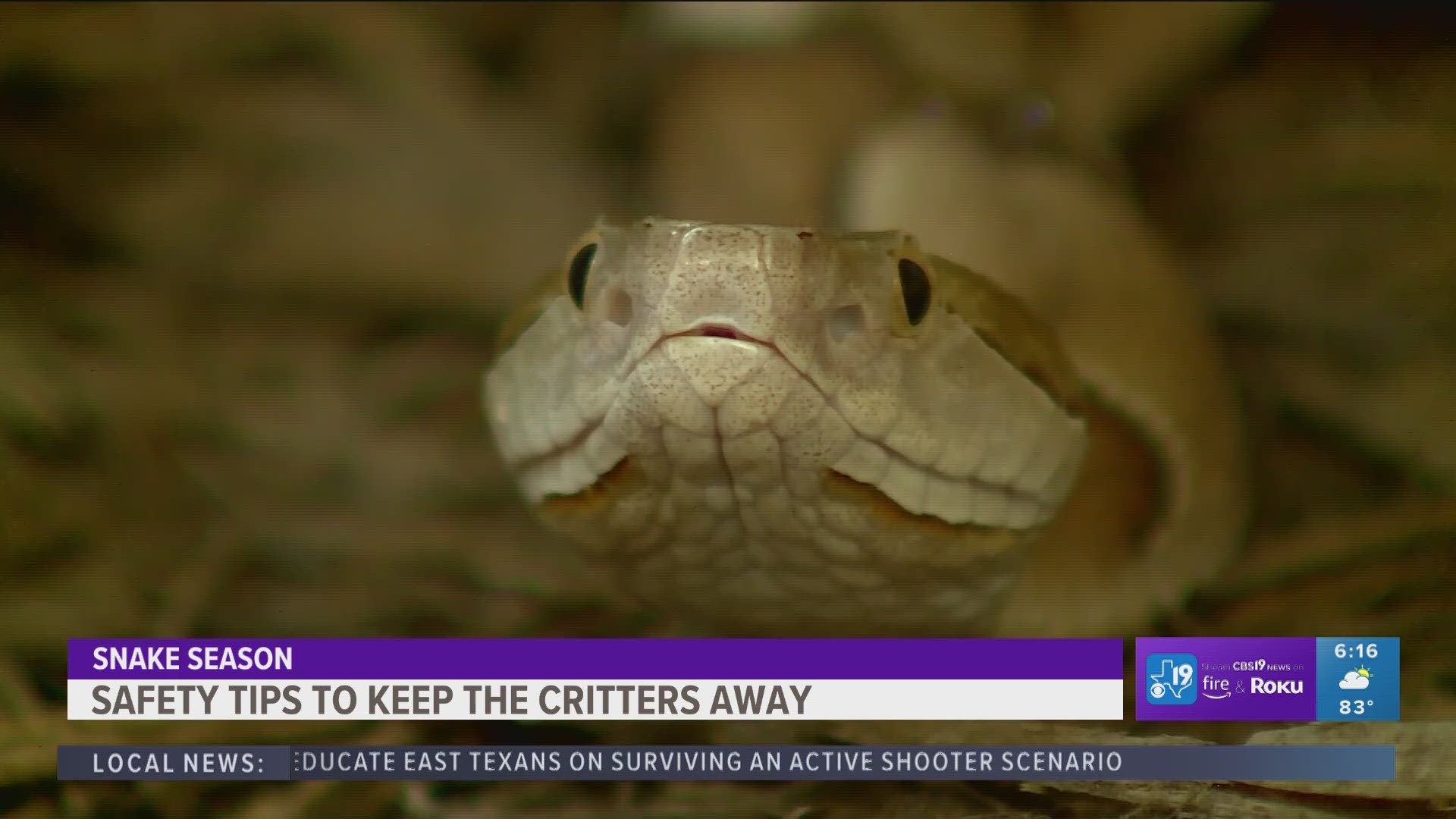TYLER, Texas — The warmer temperatures in East Texas have led to some good outings at the pool and flowers to bloom, but it's also caused snakes to come out of hiding.
Caldwell Zoo's Reptile Supervisor William Garvin said it's common for snakes to begin coming out around this time of year after months of hibernation.
"The temperatures have finally warmed up even closer to summer; they're all starting to move around and come out of hibernation," Garvin said.
With about 30 different snake species in East Texas, Garvin said most of them can be harmless.
"We have a lot of constrictors, Texas rat snakes, ribbon snakes which look like garter snakes," Garvin said. "Most of them are completely harmless."
East Texas is no stranger to venomous snakes as they can be some of the most common snakes people tend to encounter.
"The cottonmouth, which most people call water moccasins, and the copperheads are very common here," Garvin said.
The difference between a venomous and a non-venomous snake is in its physical appearance. While it may be hard to recognize at first glance, knowing the difference is key if someone stumbles upon one.
According to A-Z Animals, venomous snakes often have a triangular-shaped head with movable fangs, while non-venomous snakes have a more rounded head and can sometimes be short and fat in size.
Benny Joe Clark, snake catcher and founder of Skip's Reptile Emporium, said the best thing to do if you run into a snake is simply to stay away.
"Keep your distance; if you don't know what you're doing, just walk around and let it go," Clark said. "I'd rather people not kill them because they do have a benefit."
Most snakes are good for keeping rodents out of people's yards. Garvin said the best way to prevent snakes from getting on your property starts with good yard maintenance.
"What keeps them hanging around is unkept yards," Garvin said. "If you have leaf and wood piles or tall weeds, those things will harbor what their prey species would be, so keep your yard mowed down low and get rid of any trash piles that attract rodents and lizards."
If you happen to get bit by a snake, seek medical attention immediately. To learn about the different types of snakes in Texas and ways to avoid them, click here.

